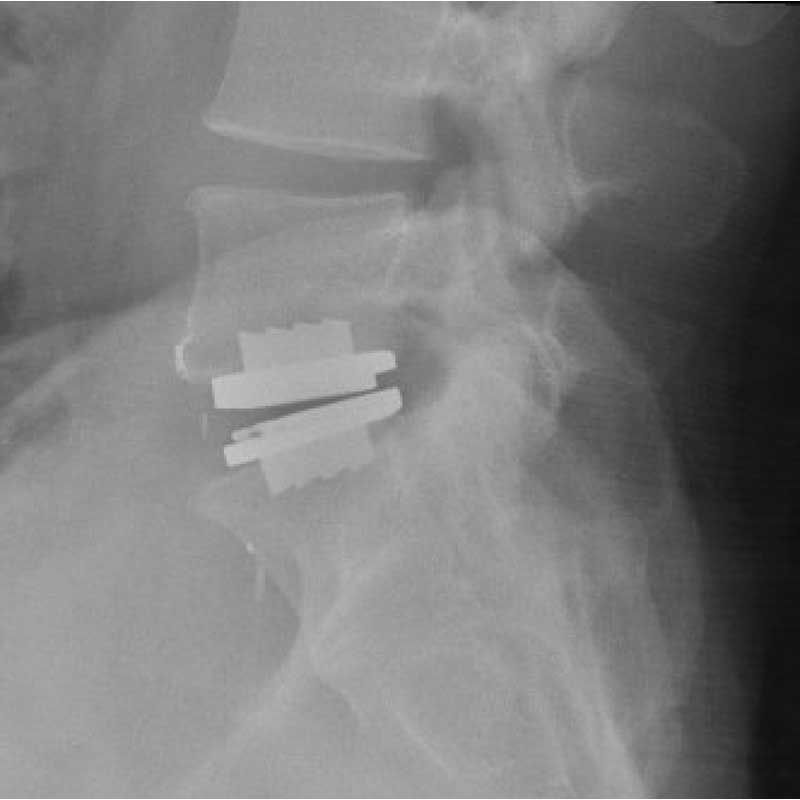Lumbar Artificial Discs
What are artificial discs?
As the name suggests, artificial discs resemble normal human discs. Healthy human discs serve as a cushion between the spinal vertebrae, and absorb stress and shock from movement, and protect the vertebrae from grinding against one another. These intervertebral discs degenerate as part of the normal aging process. As they degenerate, the discs may flatten, which can cause nerve impingement, inflammation, and pain. Disc degeneration can also cause pain as the vertebral bones begin to press against one another. This pain is increased by motion, such as bending, twisting and lifting.
Artificial discs are designed to fit into the damaged disc space in order to restore disc height, improve mobility and flexibility, and eliminate pain. There are several types of artificial discs. The discs are made of surgical grade metal (such as stainless steel or titanium). Some also include a soft, pliable inner material made from polyethylene.
Why are they used?
Degenerative disc disease is a common ailment that affects 40-50% of the over-40 population. Disc degeneration is usually treated with non-operative care, such as bed rest, pain management, and physical therapy. However, when conservative treatments fail, patients with severe degenerative disc disease may need fusion surgery to increase stability and strength, restore height, and reduce pain. This type of surgery involves removing the degenerated disc, harvesting small pieces of the patient's own bone (taken from other parts of the body, such as the hip) and using it to fuse together the damaged vertebrae. The procedure may also include the use of special spinal instrumentation to help facilitate the fusion.
However, lumbar arthroplasty (lumbar artificial disc surgery), represents a promising alternative to fusion surgery for many patients. Lumbar arthroplasty involves the replacement of damaged discs in the lower back (lumbar spine) with artificial discs. This procedure not only eliminates the need to fuse vertebrae together, but also maintains the a more natural movement of the spine. Recent advancements have significantly improved the effectiveness of lumbar artificial discs, making them a viable option for many patients.
Dr. Goldstein is expert in the use of artificial disc technology. His pioneering research in the early 2000s significantly contributed to the development and adoption of artificial discs in the United States, thus providing a viable alternative to traditional fusion surgery for many patients suffering from degenerative disc disease.
Related Articles
- Lumbar Artificial Discs
- Prodisc-L Lumbar Disc Replacement
- Lumbar Arthroplasty Lecture
- Disc Replacement vs Fusion
- Lumbar Artificial Discs Breakthrough
- Lumbar Artificial Discs CBS

For doctors and medical professionals. Research papers about Lumbar Disc Replacement or Fusion co-authored by Dr. Goldstein.
- The Incidence of Potential Candidates for Total Disc Replacement among Lumbar and Cervical Fusion Patient Populations.
- Perioperative outcomes of anterior lumbar surgery in obese versus non-obese patients.
- Effect of intervertebral disc height on postoperative motion and outcomes after ProDisc-L lumbar disc replacement.
